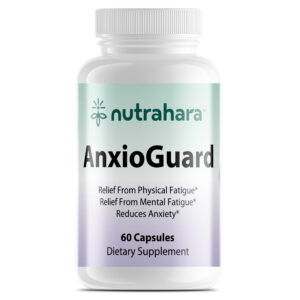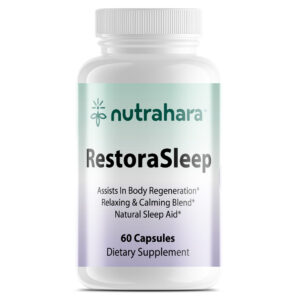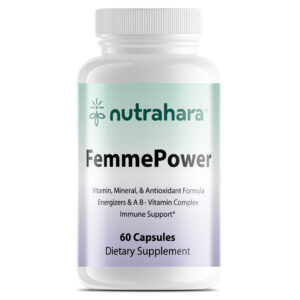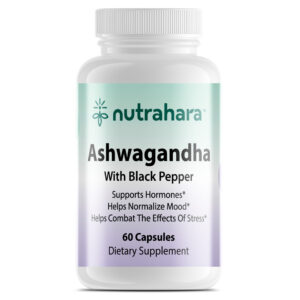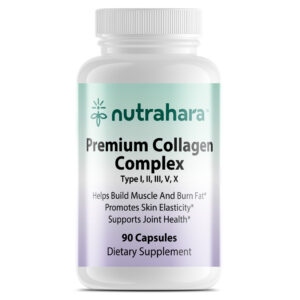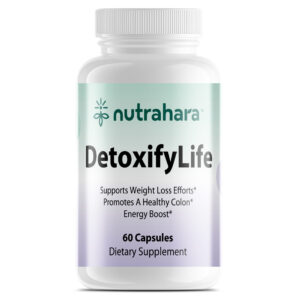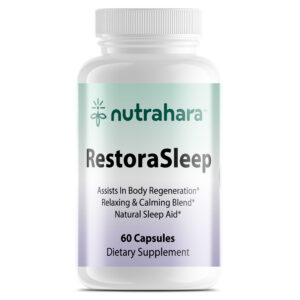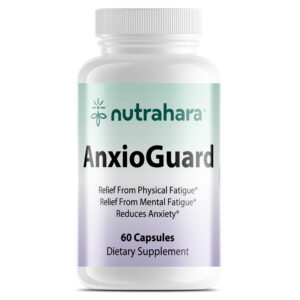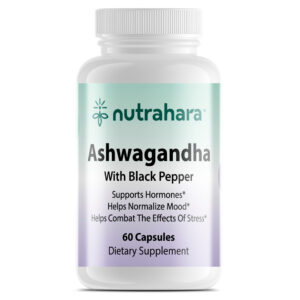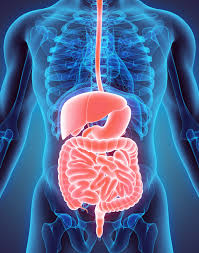Natural Remedies for Menstrual Pain

1. Introduction: Understanding Menstrual Pain
Menstrual pain, or dysmenorrhea, is a deeply personal experience that affects millions of women differently. While many accept it as a “normal” part of life, the intensity and duration of pain can significantly disrupt daily activities, affect emotional well-being, and impact productivity. For women between the ages of 30 and 60, especially those who prioritize health, wellness, and self-care, menstrual pain can feel at odds with the pursuit of an active, balanced lifestyle.
Menstrual pain is not just a physical symptom but a signal of underlying physiological processes that deserve attention. Cramping, for instance, is often caused by the release of prostaglandins—hormone-like chemicals that trigger the uterus to contract. The body’s inflammatory response can also play a significant role in pain intensity, as can stress, dietary habits, and general lifestyle choices. Recognizing these varied influences can empower women to explore holistic approaches that go beyond short-term relief and focus on root causes.
Although over-the-counter medications are common go-tos for pain relief, many women seek alternative treatments that align with a natural, holistic approach to health. This shift acknowledges that addressing menstrual pain involves more than managing symptoms; it involves creating a lifestyle that supports hormonal balance, minimizes inflammation, and nurtures emotional resilience. For many women, this means looking to methods like yoga, herbal remedies, targeted nutrition, and stress management techniques to foster lasting comfort and well-being during their cycles.
2. What Causes Menstrual Pain?
Menstrual pain, or dysmenorrhea, can be understood as the body’s response to the hormonal and physiological changes associated with the menstrual cycle. While occasional mild discomfort may be normal, severe menstrual pain often has deeper causes that need to be addressed to ensure better long-term health.
Primary Dysmenorrhea: The Role of Prostaglandins
In primary dysmenorrhea, pain is generally triggered by high levels of prostaglandins—chemical compounds that prompt the uterus to contract and shed its lining. High prostaglandin levels lead to intense uterine contractions, which can reduce blood flow and oxygen to surrounding tissues, creating cramps and discomfort. Women with elevated prostaglandin levels may experience:
- Intense cramping in the lower abdomen or back, typically starting a day or two before menstruation.
- Nausea, fatigue, and headaches that coincide with the onset of the menstrual period.
- Pain that lasts 24 to 72 hours and may lessen as menstruation progresses.
Reducing prostaglandin production and alleviating uterine inflammation are key steps in managing primary dysmenorrhea and reducing related symptoms.
Secondary Dysmenorrhea: Underlying Health Conditions
In some cases, menstrual pain is a symptom of other health conditions that directly impact the uterus or reproductive system. Unlike primary dysmenorrhea, secondary dysmenorrhea tends to worsen with age and may not respond as well to common pain relief methods. Common conditions that contribute to secondary menstrual pain include:
- Endometriosis: A condition where tissue similar to the uterine lining grows outside the uterus, leading to inflammation, severe cramping, and pain that often intensifies over time.
- Uterine Fibroids: Noncancerous growths within the uterus that can increase the heaviness and pain of menstrual periods.
- Pelvic Inflammatory Disease (PID): An infection of the reproductive organs that can cause chronic pain, especially during menstruation.
- Adenomyosis: When the uterine lining grows into the muscular wall of the uterus, causing prolonged or severe cramping.
For women experiencing these symptoms, identifying and treating the underlying condition is essential. Ignoring chronic pain may lead to further complications or exacerbation of symptoms. For more details on conditions that can contribute to menstrual cramps, refer to the Mayo Clinic’s article on menstrual cramps.
Lifestyle and Dietary Factors
Lifestyle choices and diet play significant roles in menstrual pain management. Common contributing factors include:
- Diet high in processed foods: High sugar, refined carbohydrates, and processed fats can increase inflammation, leading to worsened menstrual pain.
- Stress and lack of physical activity: High-stress levels increase cortisol, which can exacerbate hormonal imbalances, while physical inactivity can reduce circulation and increase cramping.
- Sleep irregularities: Poor sleep disrupts hormone production, affecting menstrual cycles and potentially increasing pain sensitivity.
Understanding these various causes helps women identify potential triggers for their menstrual pain and empowers them to make adjustments that may reduce discomfort during their cycles.
3. Symptoms and Types of Menstrual Pain
Menstrual pain varies widely from person to person, influenced by factors like age, lifestyle, and underlying health conditions. Understanding the different symptoms and types of menstrual pain can help women identify patterns in their cycle and find targeted relief methods.
Common Symptoms of Menstrual Pain
Menstrual pain, or dysmenorrhea, typically affects the lower abdomen, though it can radiate to other areas of the body. Symptoms can range from mild discomfort to severe, debilitating pain. Common symptoms include:
- Cramping: Often felt in the lower abdomen, cramping is the most common symptom and can range from mild to intense. Some women experience sharp, stabbing sensations, while others feel a dull ache.
- Back Pain: Many women experience lower back pain, which may feel like a constant ache or occasional sharp pangs.
- Leg Pain: Pain or weakness radiating down the legs is common, especially during intense cramping.
- Nausea and Vomiting: High levels of prostaglandins can sometimes trigger nausea, leading to vomiting in severe cases.
- Headaches and Dizziness: Hormonal fluctuations during menstruation can result in headaches or dizziness, adding to the overall discomfort.
- Fatigue: Menstrual pain and the body’s response to hormonal changes can lead to severe fatigue and exhaustion, making daily activities feel challenging.
Types of Menstrual Pain
Understanding whether menstrual pain is classified as primary or secondary dysmenorrhea can help women pinpoint the most effective relief strategies.
Primary Dysmenorrhea
Primary dysmenorrhea refers to menstrual pain that isn’t caused by an underlying medical condition. It is common in adolescents and young adults and tends to decrease with age. This type of dysmenorrhea is typically caused by elevated prostaglandin levels, which lead to uterine contractions. Symptoms generally include:
- Pain that starts 1-2 days before menstruation and lasts for the first few days of the cycle.
- Pain that decreases with age or after childbirth.
- Symptoms that may improve with exercise and lifestyle adjustments focused on reducing inflammation.
Secondary Dysmenorrhea
Secondary dysmenorrhea is menstrual pain linked to an underlying health condition, such as endometriosis or uterine fibroids. Unlike primary dysmenorrhea, secondary dysmenorrhea often begins later in life and tends to worsen over time. Common characteristics include:
- Pain that begins earlier in the cycle and may last longer than typical period cramps.
- Pain that doesn’t respond to common over-the-counter pain medications.
- Associated symptoms: Women may also experience heavy bleeding, irregular periods, or pain during other times of the cycle.
Identifying whether pain is primary or secondary dysmenorrhea is essential for choosing the right relief approach. Women with secondary dysmenorrhea may need to address the underlying cause directly to experience long-term improvement. Recognizing the specific symptoms and types of menstrual pain allows for a more personalized approach to managing discomfort and embracing a healthier menstrual cycle.
4. Natural Treatments for Menstrual Pain Relief
Natural treatments offer a holistic way to relieve menstrual pain by addressing root causes and enhancing the body’s resilience. These methods support hormonal balance, reduce inflammation, and promote overall well-being without the potential side effects of conventional pain medications. By combining various approaches, women can find personalized relief that fits their unique cycle and health needs.
4.1 Herbs and Supplements for Menstrual Pain
Herbs and natural supplements have been used for centuries to manage menstrual discomfort. Several have anti-inflammatory and hormone-balancing properties that help ease pain effectively:
- Ginger: Known for its anti-inflammatory effects, ginger helps reduce pain intensity when taken at the onset of menstruation. Ginger tea or supplements can provide relief.
- Turmeric: The active compound curcumin in turmeric reduces inflammation and supports circulation, helping ease cramps.
- Chasteberry: This herb supports hormonal balance by reducing prolactin levels, which can help regulate the menstrual cycle and reduce pain.
- Magnesium: Known for its muscle-relaxing properties, magnesium helps alleviate cramps and reduce PMS symptoms. It’s found in leafy greens, nuts, or as a supplement.
- Omega-3 Fatty Acids: Found in fish oil, omega-3s have been shown to reduce the intensity of menstrual cramps due to their anti-inflammatory properties.
4.2 Vitamins and Nutrients to Support Menstrual Health
Certain vitamins are essential for hormonal health and can reduce the severity of menstrual symptoms:
- Vitamin B6: Helps regulate mood swings and may alleviate cramps by balancing estrogen and progesterone levels.
- Vitamin D: Supports immune function and reduces inflammation, which can help manage menstrual pain.
- Vitamin E: Known to reduce prostaglandin production, vitamin E can help lessen the severity of cramps and breast tenderness.
4.3 Dietary Adjustments to Reduce Pain and Inflammation
Diet plays a significant role in menstrual health. Anti-inflammatory foods help minimize pain, while certain dietary changes can promote a smoother cycle:
- Increase leafy greens and whole grains: Foods high in fiber and nutrients help balance hormones and reduce inflammation.
- Reduce processed foods and sugar: These can lead to inflammation and hormone fluctuations, increasing pain levels.
- Incorporate healthy fats: Fats like avocados, nuts, and olive oil support hormonal health and reduce inflammation.
4.4 Exercise and Movement for Pain Relief
Regular exercise is one of the most effective ways to alleviate menstrual pain. Movement promotes circulation and helps release endorphins, the body’s natural pain relievers:
- Low-impact activities: Gentle exercises like walking, cycling, or swimming can relieve cramps and boost energy.
- Stretching exercises: Simple stretching or gentle yoga poses can relieve muscle tension and support relaxation.
4.5 The Role of Yoga and Meditation
Yoga and meditation not only reduce pain but also support emotional well-being, helping women manage stress and boost resilience during their menstrual cycle:
- Specific yoga poses: Poses like Child’s Pose, Cat-Cow, and Reclining Bound Angle help release tension in the pelvic area and reduce cramping.
- Meditative breathing: Practicing deep, rhythmic breathing calms the nervous system and reduces stress-induced inflammation, making it easier to manage pain.
4.6 Heat Therapy: Simple and Effective Pain Management
Heat is a natural way to soothe cramps and promote blood flow to the pelvic area, relieving tension and discomfort:
- Heating pads or warm compresses: Applying heat to the lower abdomen helps relax muscles and ease cramps.
- Warm baths: A warm bath with Epsom salts adds magnesium to the body, further relaxing muscles and easing pain.
By combining these natural treatments, women can find sustainable and effective relief that aligns with a balanced, healthy lifestyle. These approaches not only target menstrual pain but also contribute to overall wellness.
5. Lifestyle Changes to Alleviate Menstrual Pain
Lifestyle adjustments play a crucial role in reducing menstrual pain by helping to balance hormones, decrease inflammation, and improve overall well-being. Small, sustainable changes in daily habits can offer significant relief and support a smoother menstrual cycle.
5.1 Stress Management Techniques
Chronic stress can amplify menstrual pain by increasing cortisol levels, which disrupts hormone balance. Incorporating regular stress management techniques can ease menstrual symptoms and support mental health:

- Mindfulness Meditation: Practicing mindfulness for just 10-15 minutes a day can lower cortisol levels and reduce pain sensitivity.
- Deep Breathing Exercises: Techniques like diaphragmatic breathing help calm the nervous system, making it easier to manage cramps and discomfort.
- Regular Downtime: Setting aside time for hobbies, relaxation, or quiet moments promotes mental clarity and reduces stress-related menstrual pain.
5.2 Improved Sleep Habits
Quality sleep is essential for hormonal regulation and reducing inflammation. Establishing a consistent sleep routine can support menstrual health and help prevent pain:
- Consistent Bedtime: Going to bed at the same time every night enhances the body’s natural circadian rhythms, supporting hormonal balance.
- Screen-Free Time Before Bed: Avoiding screens an hour before bedtime reduces blue light exposure, making it easier to fall asleep and promoting restful sleep.
- Sleep Environment Optimization: Creating a calming sleep space with comfortable bedding, dim lighting, and minimal noise enhances sleep quality.
5.3 Balanced Daily Nutrition
Daily nutrition is the foundation of menstrual health. Eating balanced meals that support hormonal balance can reduce pain and inflammation:
- Anti-inflammatory Foods: Incorporate foods like berries, leafy greens, and turmeric to reduce inflammation.
- Limit Caffeine and Alcohol: Excessive caffeine and alcohol can disrupt hormonal balance and increase cramping.
- Hydration: Staying hydrated prevents bloating and supports muscle relaxation, which can ease cramps.
Through simple lifestyle changes, women can experience greater comfort and control over menstrual pain, enhancing their overall quality of life.
6. Tips and Tricks: Practical Ways to Manage Menstrual Pain
Managing menstrual pain effectively often comes down to simple, practical steps that can be easily incorporated into daily routines. Here are some quick and actionable tips for alleviating discomfort during menstruation:
- Stay Warm: Applying a heating pad or warm compress to the lower abdomen can help relax uterine muscles and reduce cramping.
- Hydrate Regularly: Drinking plenty of water can reduce bloating and prevent muscle tension, making cramps less intense.
- Prioritize Movement: Gentle stretches or a brisk walk can increase blood flow and release endorphins, the body’s natural pain relievers.
- Essential Oils: Massaging the abdomen with diluted lavender or clary sage oil can offer pain relief due to their calming and anti-inflammatory properties.
- Small, Frequent Meals: Eating smaller meals throughout the day stabilizes blood sugar and can reduce PMS symptoms like irritability and fatigue.
- Practice Self-Care: Taking time for soothing activities, like reading or listening to music, can reduce stress and take your mind off the pain.
These easy-to-implement strategies can be combined to create a personalized routine, helping women manage their menstrual pain more comfortably and effectively.
7. Real-Life Testimonials and Success Stories
Hearing from other women who have successfully managed their menstrual pain can provide hope, motivation, and insight. These real-life stories highlight the variety of approaches that have helped individuals find relief, offering encouragement to others exploring their own path to wellness.
Sarah, 35 – Yoga and Herbal Supplements
“I struggled with severe cramps that would often disrupt my work and personal life. After trying different painkillers without much success, I decided to adopt a natural approach. I started a daily yoga practice focusing on poses like Child’s Pose and Cat-Cow, and I added ginger and magnesium supplements to my routine. Within a few months, my pain levels dropped significantly. Now, my period feels much more manageable, and I’m in tune with my body’s needs.”
Amina, 42 – Anti-Inflammatory Diet and Essential Oils
“For years, my cramps were unbearable, and they seemed to get worse as I got older. I came across information about the benefits of an anti-inflammatory diet, so I began incorporating foods like leafy greens, turmeric, and fatty fish into my meals. I also use lavender oil for abdominal massages during my cycle. The change has been profound—I’m no longer relying on medication every month, and I feel more energized.”
Emily, 28 – Heat Therapy and Hydration
“I used to avoid social plans during my period because of the pain. One day, a friend suggested using a heating pad regularly and drinking lots of water to reduce bloating and muscle tension. These small changes made a huge difference. Now, as soon as I feel cramps coming on, I reach for my heating pad and a big glass of water. I’m finally able to enjoy my regular routine, even on my period.”
These success stories illustrate the impact of lifestyle adjustments and natural remedies in managing menstrual pain. Each woman’s journey is unique, but these shared experiences offer valuable guidance and inspiration.
8. Conclusion: Embracing a Holistic Approach to Menstrual Health
Embracing a holistic approach to menstrual health empowers women to take control of their well-being with natural, sustainable methods. Rather than solely relying on pain medication, incorporating lifestyle changes, dietary adjustments, and gentle practices like yoga and meditation can provide long-term relief and strengthen the body’s resilience. This approach not only addresses menstrual pain but also promotes balance in overall health, supporting a smoother and more positive monthly experience.
By exploring herbs, supplements, stress management techniques, and personal care routines, women can find what works best for their unique needs. Ultimately, menstrual health is deeply personal, and a holistic approach allows each individual to build a toolkit for comfort, confidence, and greater harmony with their body.
Written by the Nutrahara Team
This article was developed by the Nutrahara team of nutrition scientists and naturopaths, who specialize in formulating safe, effective, and science-backed supplements for women’s health. Every ingredient we use is carefully selected to support your body’s unique needs—naturally. Follow us on LinkedIn for expert insights and updates on our latest wellness solutions.


